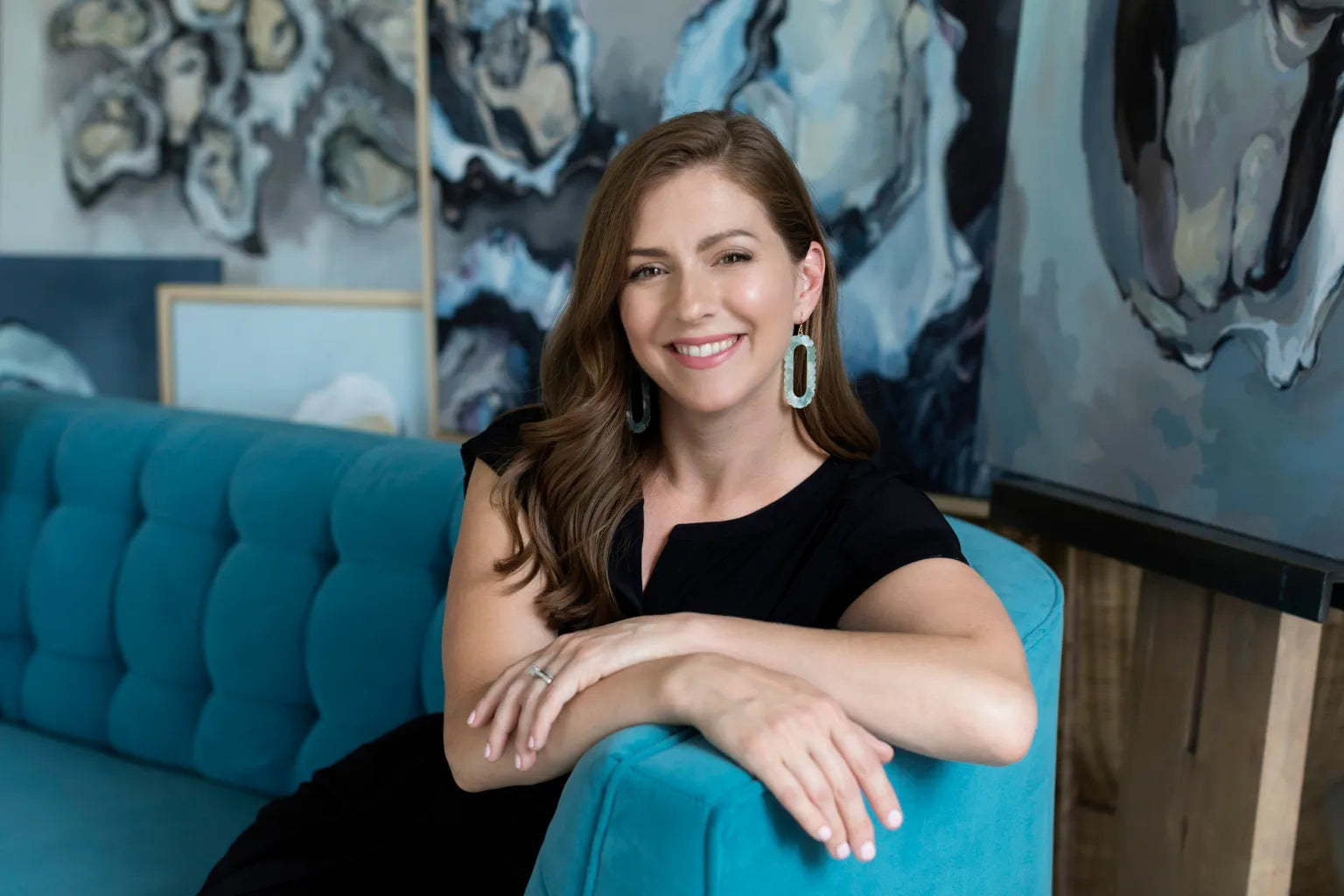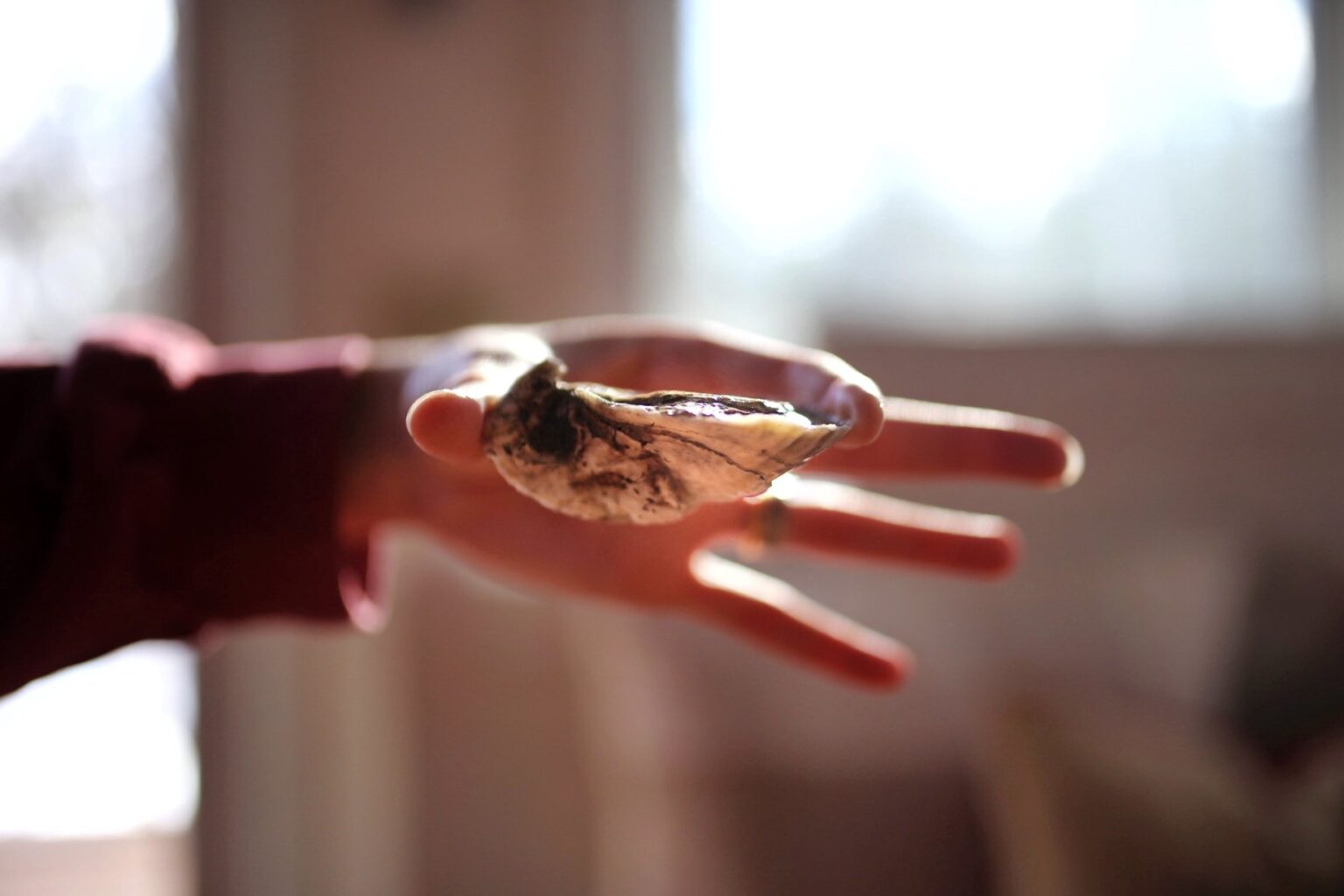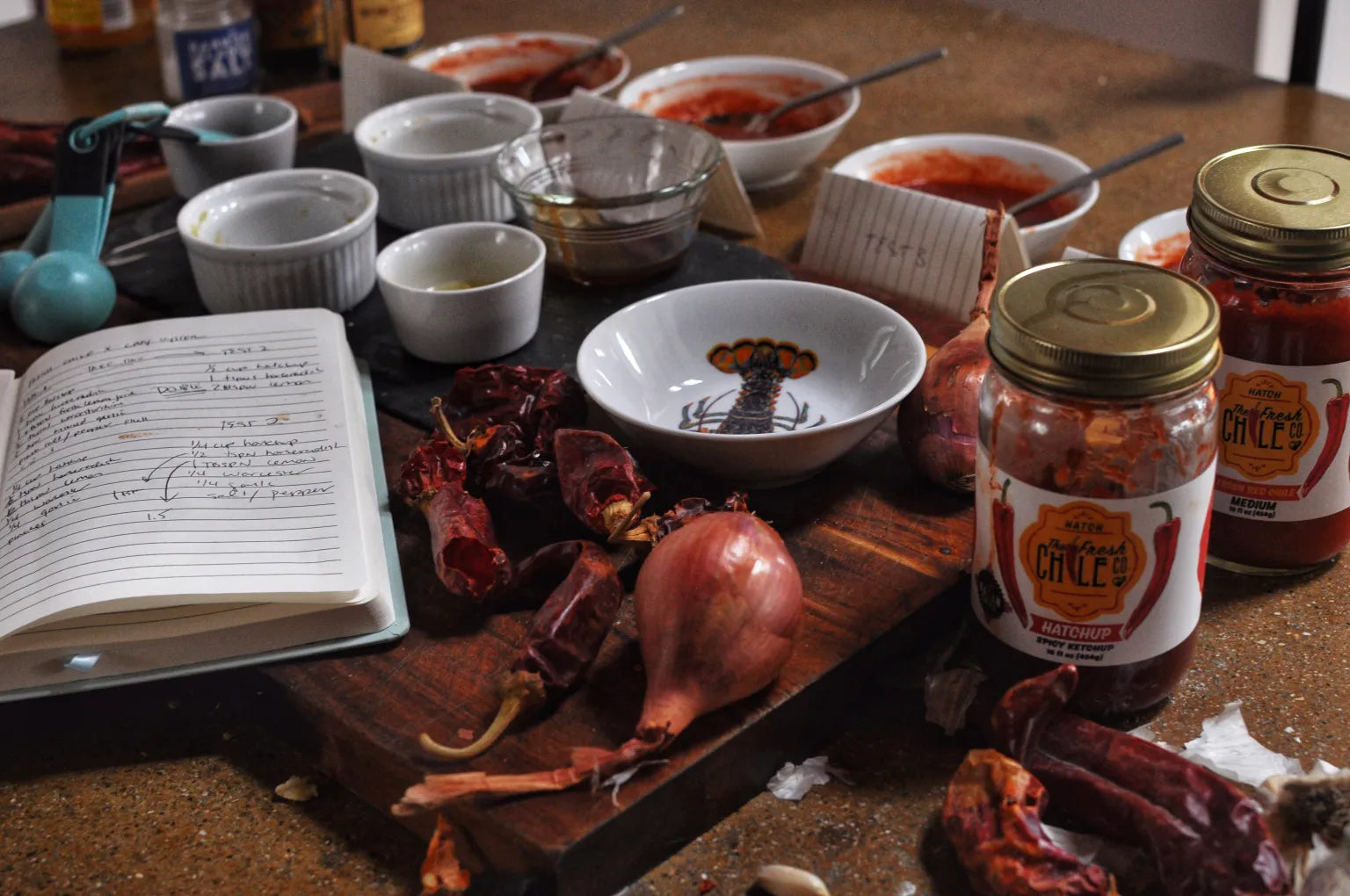Stephie Jones | The Oyster’s Modern Impressionist

New England has finally caught up to Spring and according to my Grandmother, “it’s time to rearrange the furniture.”
To honor the tradition, I buried my head into our office closet and recovered my most colorful paintings and prints – the ones that inspire me after a frigid and mucky mud season. It’s no surprise that most of them have something to do with oysters; our rebirth from hibernation, parelleled. One of these days, I’ll buy a Maine house and fill it so full of bivalve flair, you’ll want to eat the walls!
But that’s where Stephie Jones could do a number on me. Her art is a rapture of color; a fiery interpretation of oysters that I’ve adored for years. Her modern impressionism meets America’s rugged coast and covers me in thick, bold colors – the same strokes I’m praying will sprout from my gardens.
So I interviewed her, determined to give myself a thousand reasons to fill my home with her canvasses, and found a story full of overcoming hardship, finding resilience, and following her passions. I think it’s time to make a new purchase. . . of course. . . once I move around the couch!
Here’s Stephie’s story.
Stephie, what is your background and how did you get started as an artist?
STEPHIE: I was always making art as a child, but in college I deviated from it and graduated with a business degree. I worked in advertising and later commercial real estate before deciding to start my own graphic design business. After many years working happily as a graphic designer, I nearly died of a hemorrhage when I gave birth to my daughter. After several days in ICU and another week recovering in the hospital, I decided I’d pursue a career in art instead of being “sensible.” I went through a number of surgeries that week and one revision surgery later. Those scars are long and short, and they remind me that life can be long or short—you don’t have a guarantee of tomorrow. And a trauma today doesn’t guarantee you won’t face another tomorrow. Go for what makes you happy.
Once I recovered and my youngest child was in preschool, I immediately transitioned into becoming a fine artist, as that’s always been my truest essence. I’ve been painting professionally since 2016 and I don’t foresee any more career switches.
What inspires you about oysters as a subject?
STEPHIE: I just love the ever-changing shapes and textures. There are so many colors and such a variety, it’s endless. I lose myself in their nooks and crannies, in the shine of a freshly opened oyster and all of its salty goodness. They allow for so much variety and a great range of interpretation. People ask me if I get tired of painting so many oysters and it surprises even me to say that the answer is always a no.






Invite us into your artistic process. How do you approach oysters?
STEPHIE: I’d say I’m really an artist that gets lost in the process. I don’t think as much about why I’m making this or the end product’s effect on an audience, I indulge my need to create it and express myself during the creation. Creating is a meditation, it feels so good to lose yourself as you work. Somedays it’s effortless and rewarding, and other days the work sputters out with difficulty and leaves you feeling unsatisfied as you work out small failures. I love the high of the effortless days and the challenge of the unrewarding days. I always say you can’t fully appreciate summer without a winter, and allowing “stink” days helps me to appreciate “flow” days even more.
Every time I sit down to paint an oyster, it almost feels as if I’ve never done it before. Isn’t that odd? To paint something so often, but to be in a state of infancy each time you approach it. I love to look for beautiful texture, color mixtures, and layering as I work. Acrylic on canvas is my preferred medium, and watching the colors morph and change as they layer is so satisfying.
My process generally involves marinating in the subject first. I collect reference photos and will sometimes visit oyster bars where I ask to keep my shells as part of my research. Then I think about how I want the paintings to look (abstract, realistic, loose, colorful, or muted). I’ll begin working on composition sketches that explore variations in size and arrangement. Then I approach a rough color scheme. Lately, I’m playing with bright color combinations that would never be found in a natural oyster, as well as lively modern backgrounds and lots of layers that allow some of an underlying color to peek through. As an artist, I have a general feeling when a piece is “done,” so I try to stop at that point before I endanger the painting by overworking it.
What impression do you hope others will feel when exploring your art?
STEPHIE: My current work is all about evoking a nostalgic mood and a happy peaceful feeling—I love it when viewers connect with the subject matter in a way that brings up good memories for them. For me, that feeling is late summer nights slurping oysters on the beach. No schedule. No place to rush off to. Watching my kids run around and yell while the wind lifts my hair off my neck.
The first time I saw the ocean I was eight and greeted by an endless stream of shells. All free, all for me, no limited supply. I was inspired and elated. I’d comb through them and lose time. So much variety and activity without limits. When I look at my own paintings as a viewer now, I get lost in the smoothness and explore the odd shapes. It invites my mind to wander and then come back again.
How are oysters related to the overall theme and vision of your work?
STEPHIE: I’m a coastal artist, and oysters are intrinsically part of my life and lifestyle. I love working with natural themes and approaching them from different angles (from realistic to abstract). I like to evoke the feeling of the beach in my viewers. Oysters are a wonderful metaphor for human beings. We all have our rough patches, or smooth sides, areas with dull dingy ragged edges, and crevices filled with our truest, softest colors. They are timeless. No two exactly alike, yet all have elements that can relate to another. I suppose I also like oysters because they’re not for everyone; they can be polarizing.
What do you hope is your contribution as an oyster artist today in North America?
STEPHIE: I hope my contribution in this respect is creating a source of beauty. Generating in my viewers a feeling of nostalgia. Letting people lose themselves for a moment. Sparking a memory to emerge of times spent near the water. I love that I’m located in Virginia, which has had great success in farming oysters as part of this exciting rebirth.
___
You can follow Stephie on Instagram or Facebook and shop her originals and prints on her website. Thank you, Stephie, for the engaging conversation and a heavy dose of Spring inspiration!



